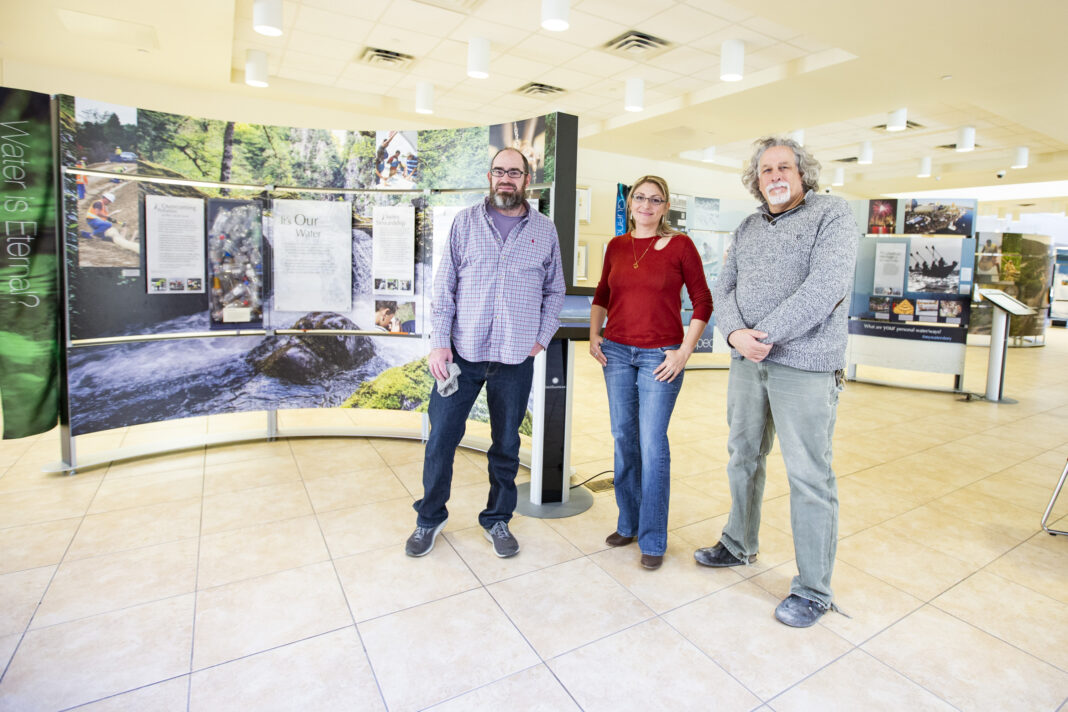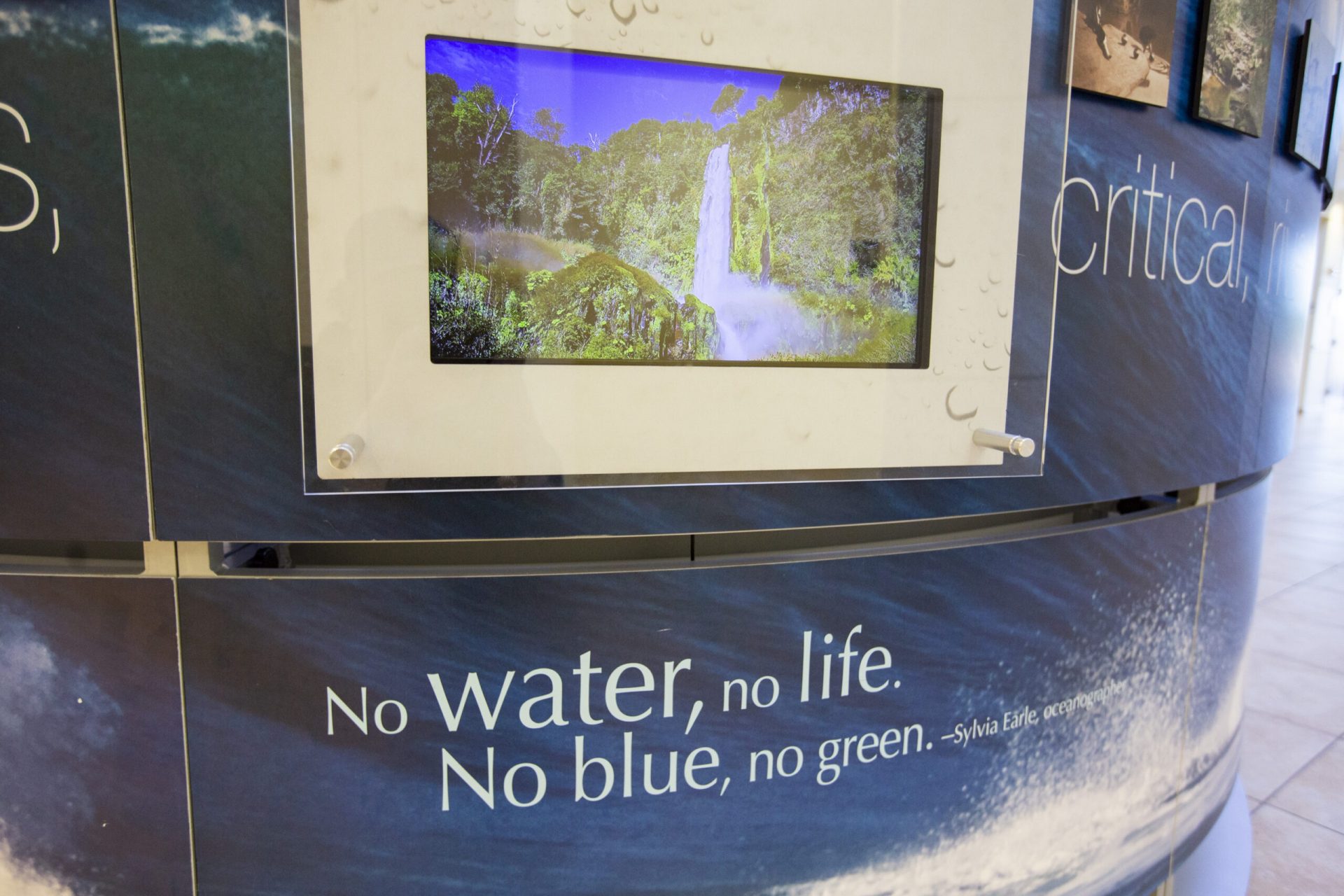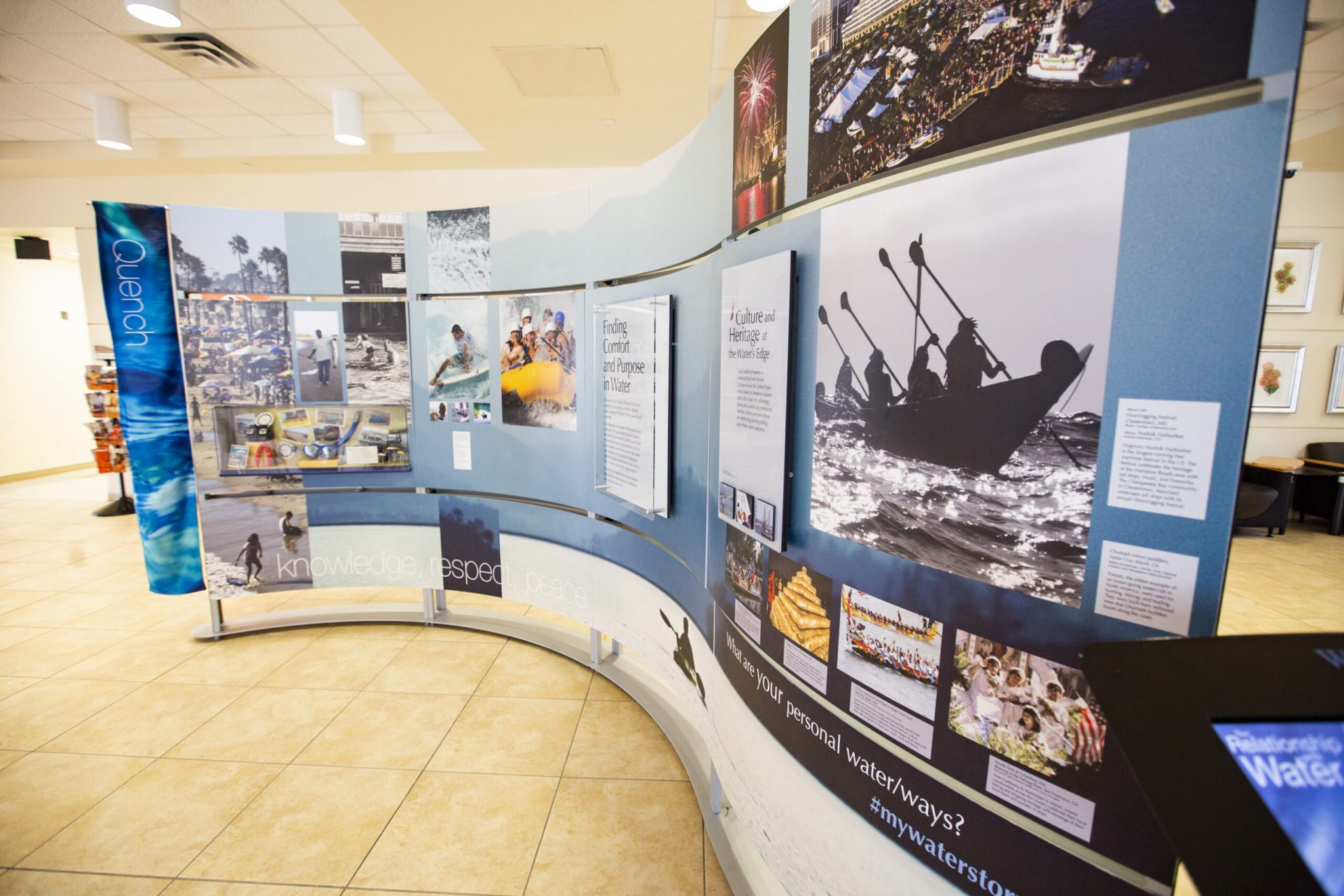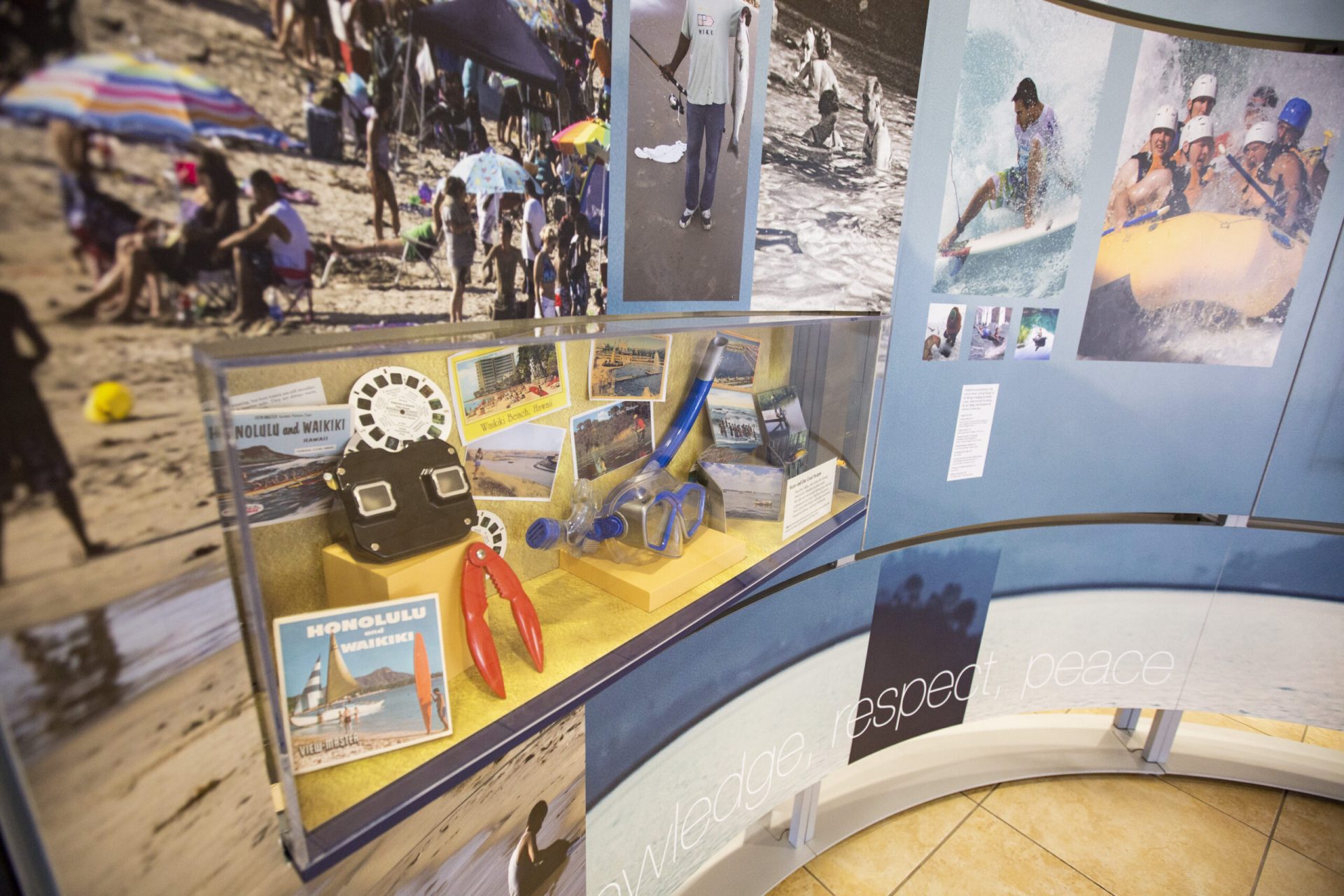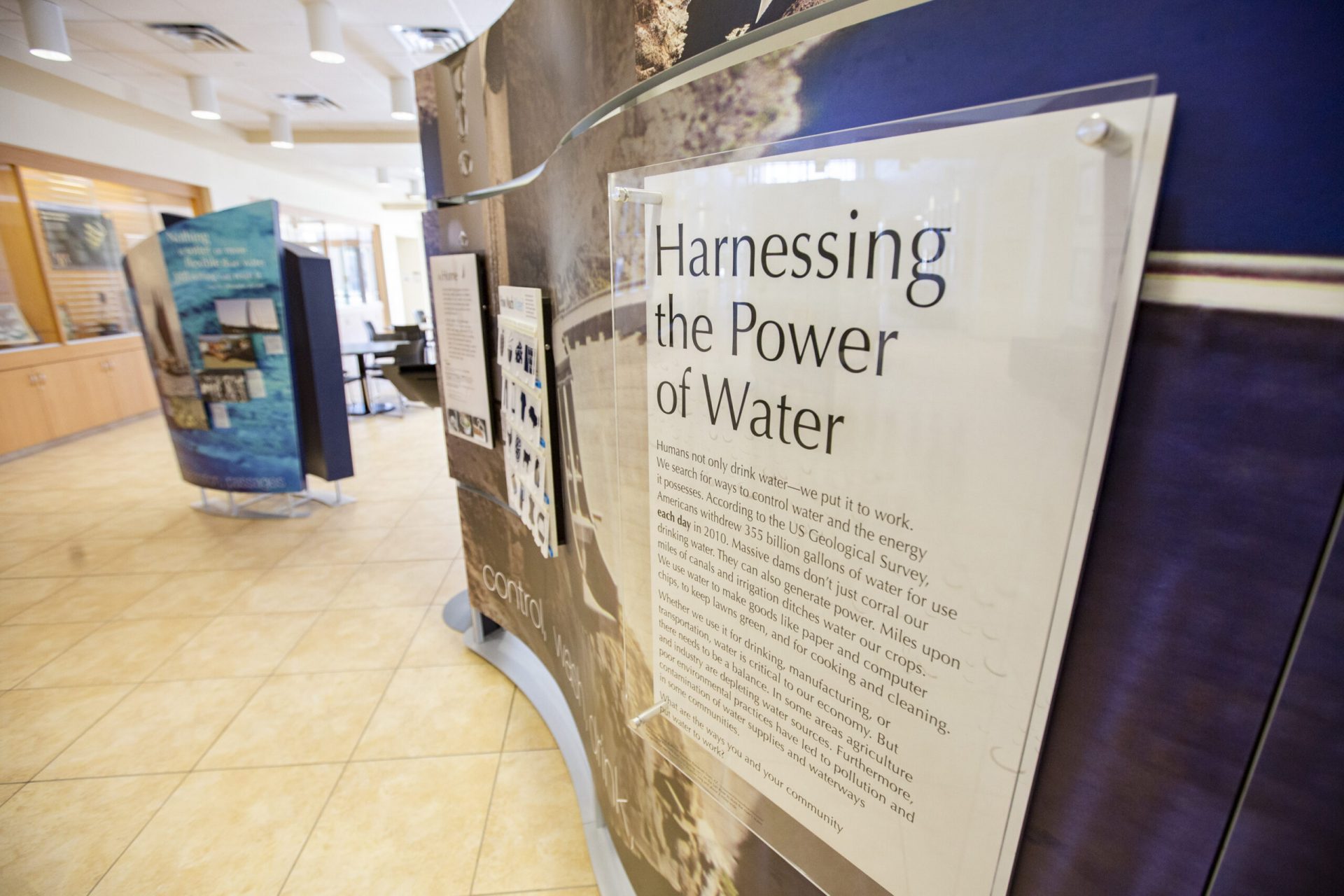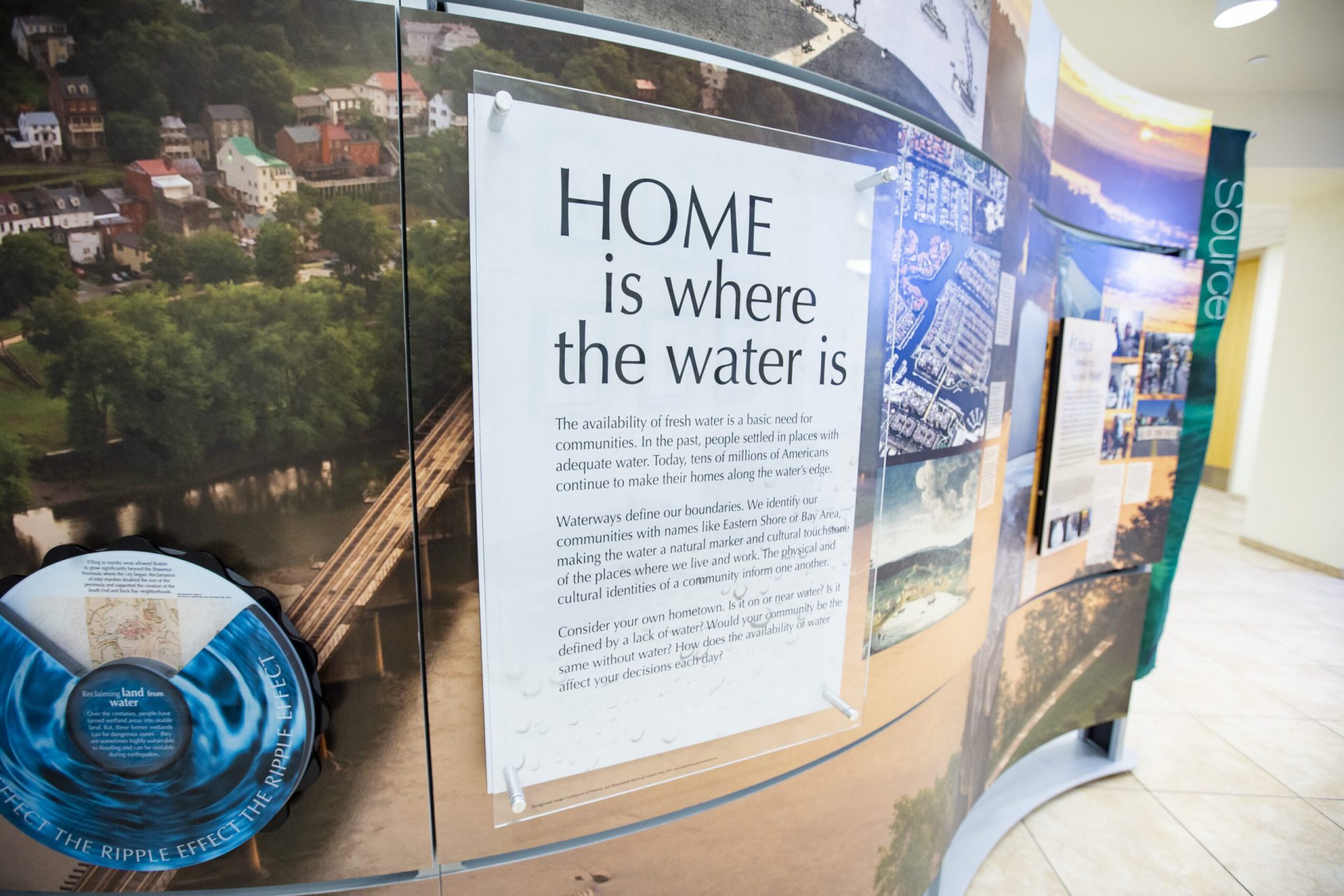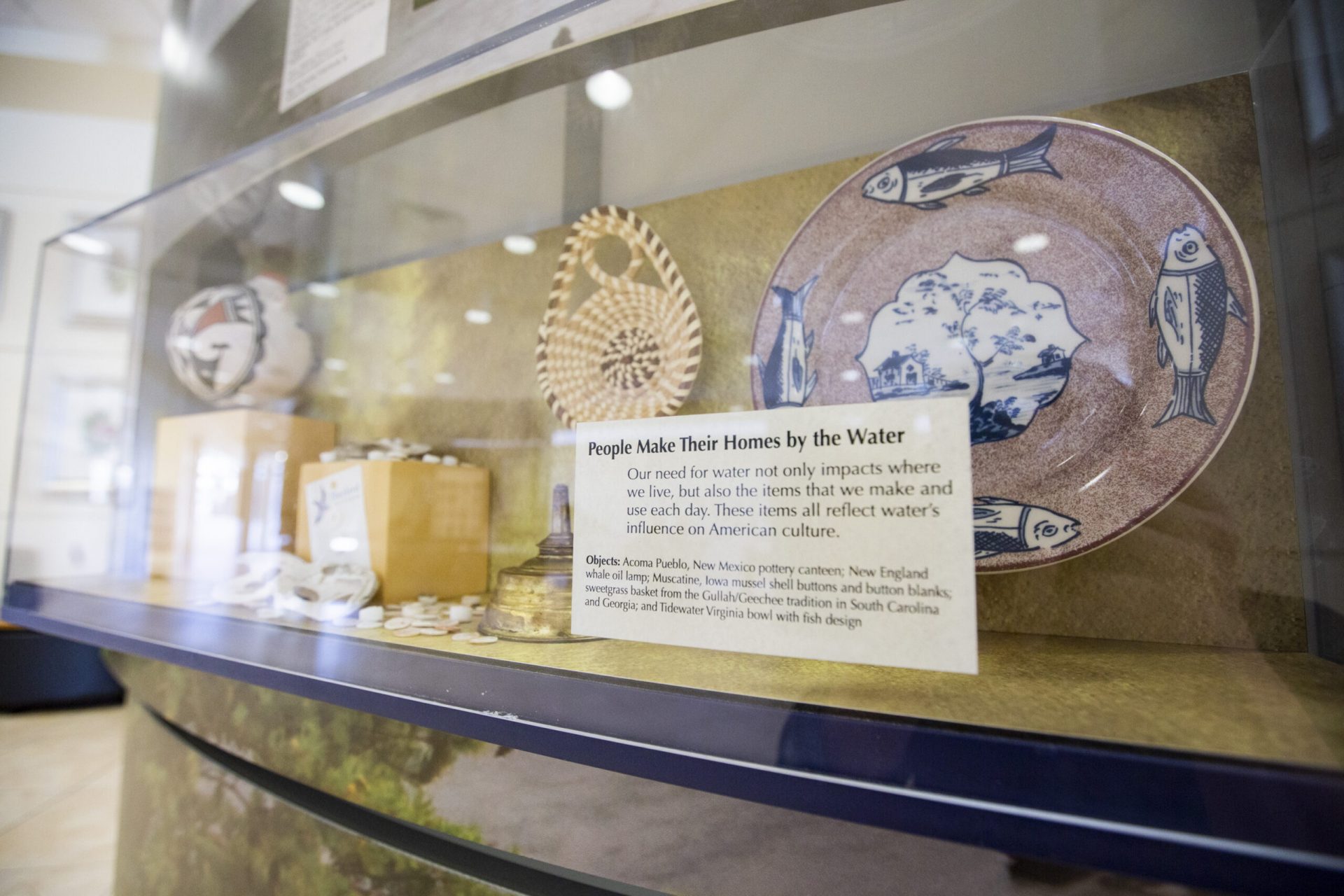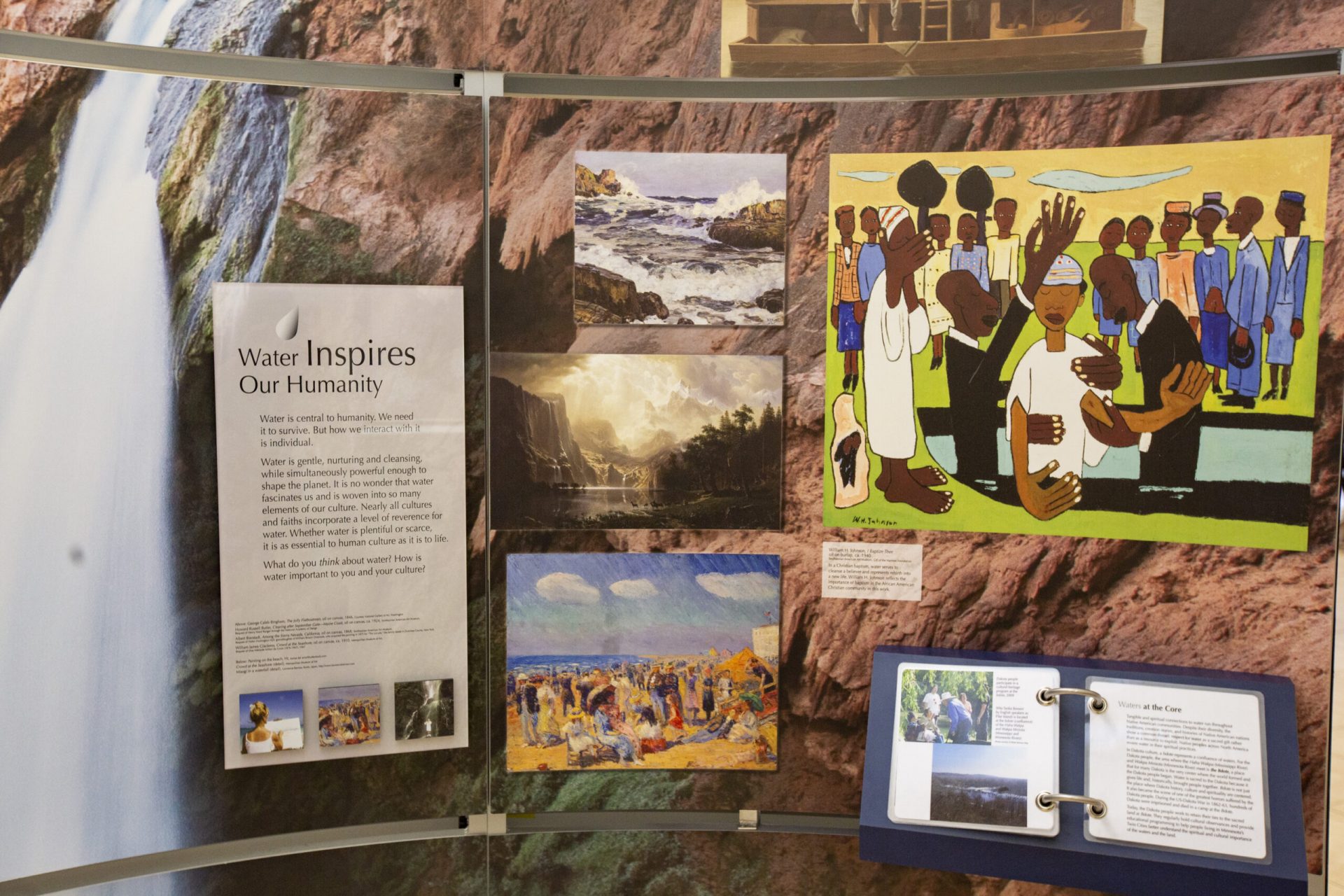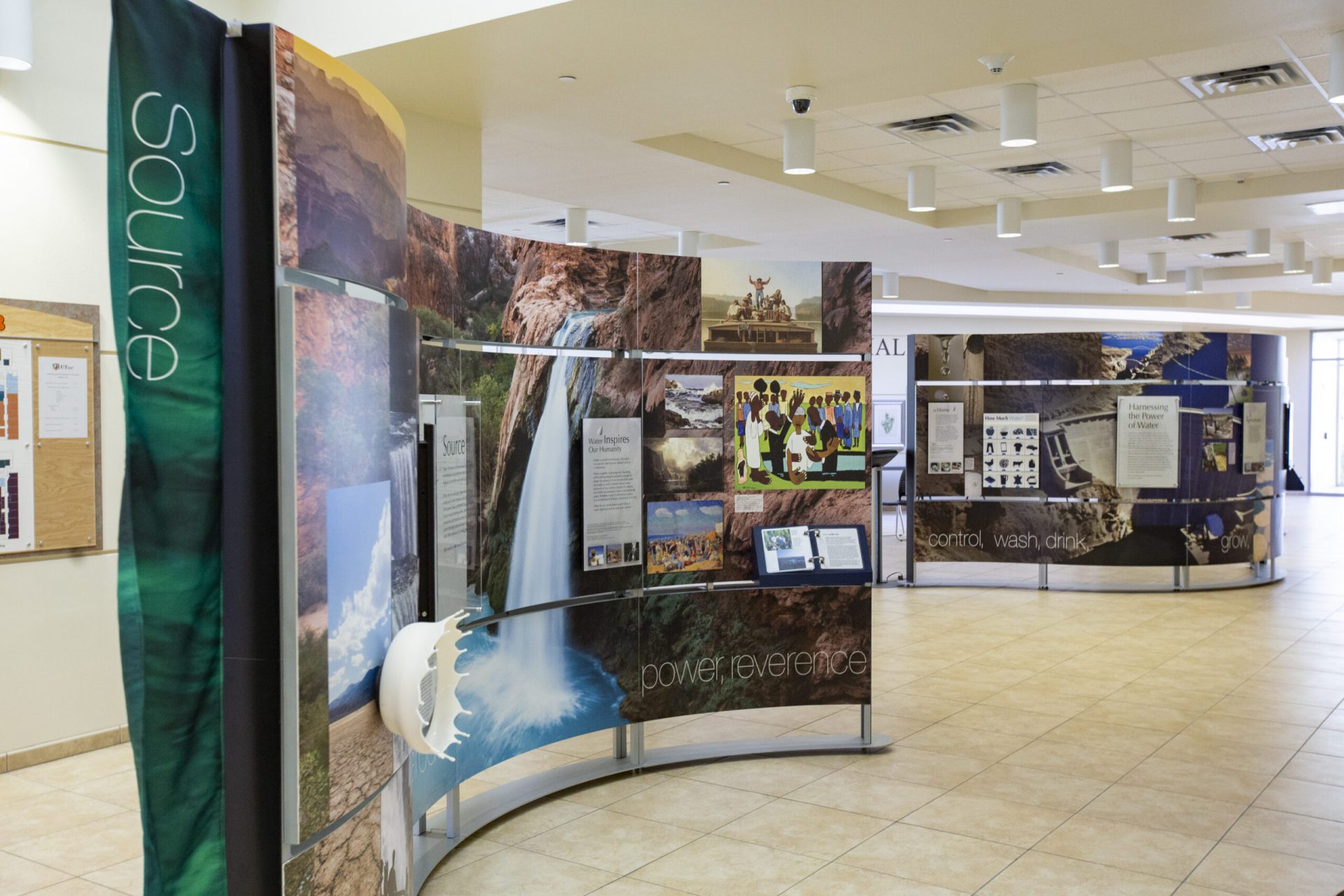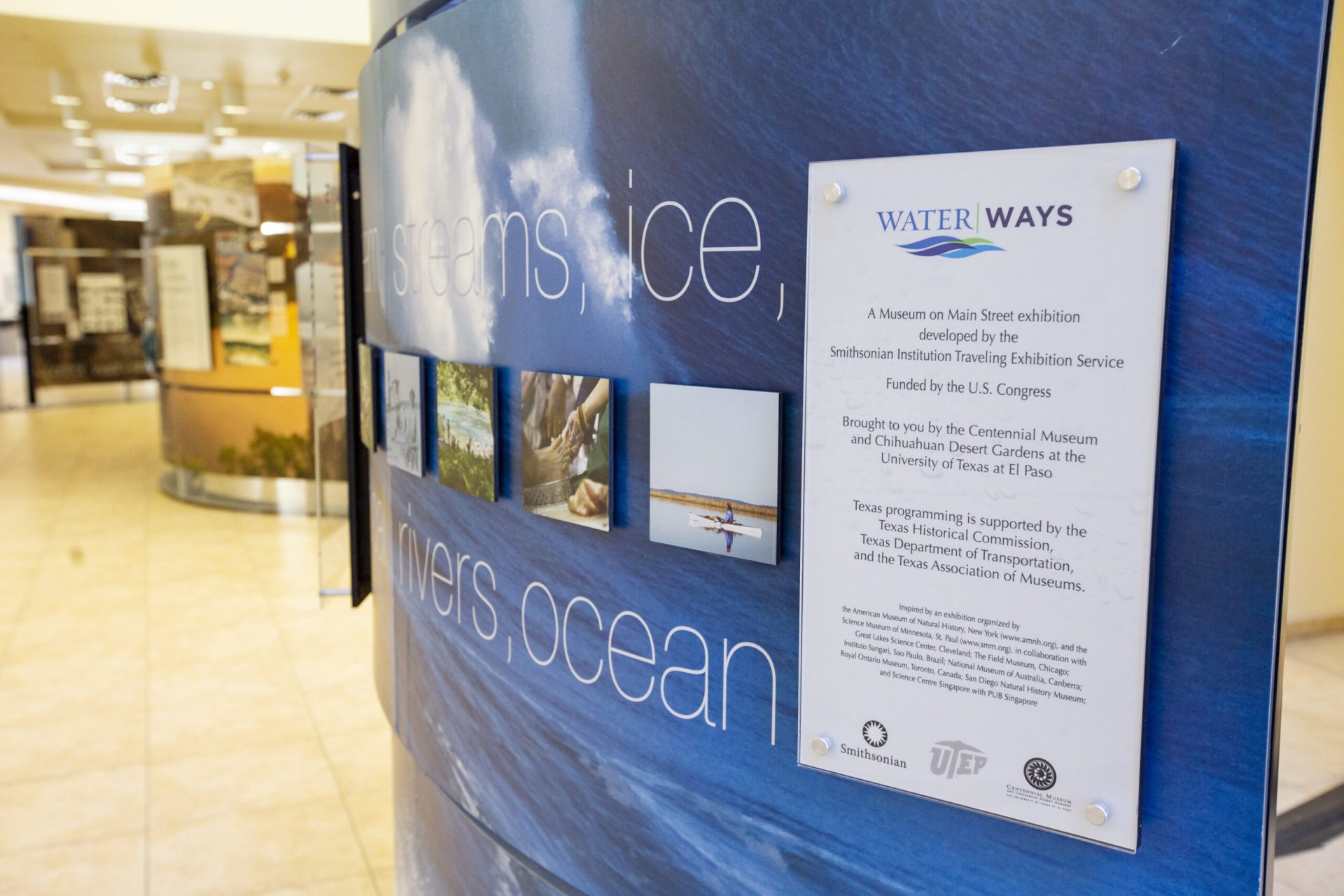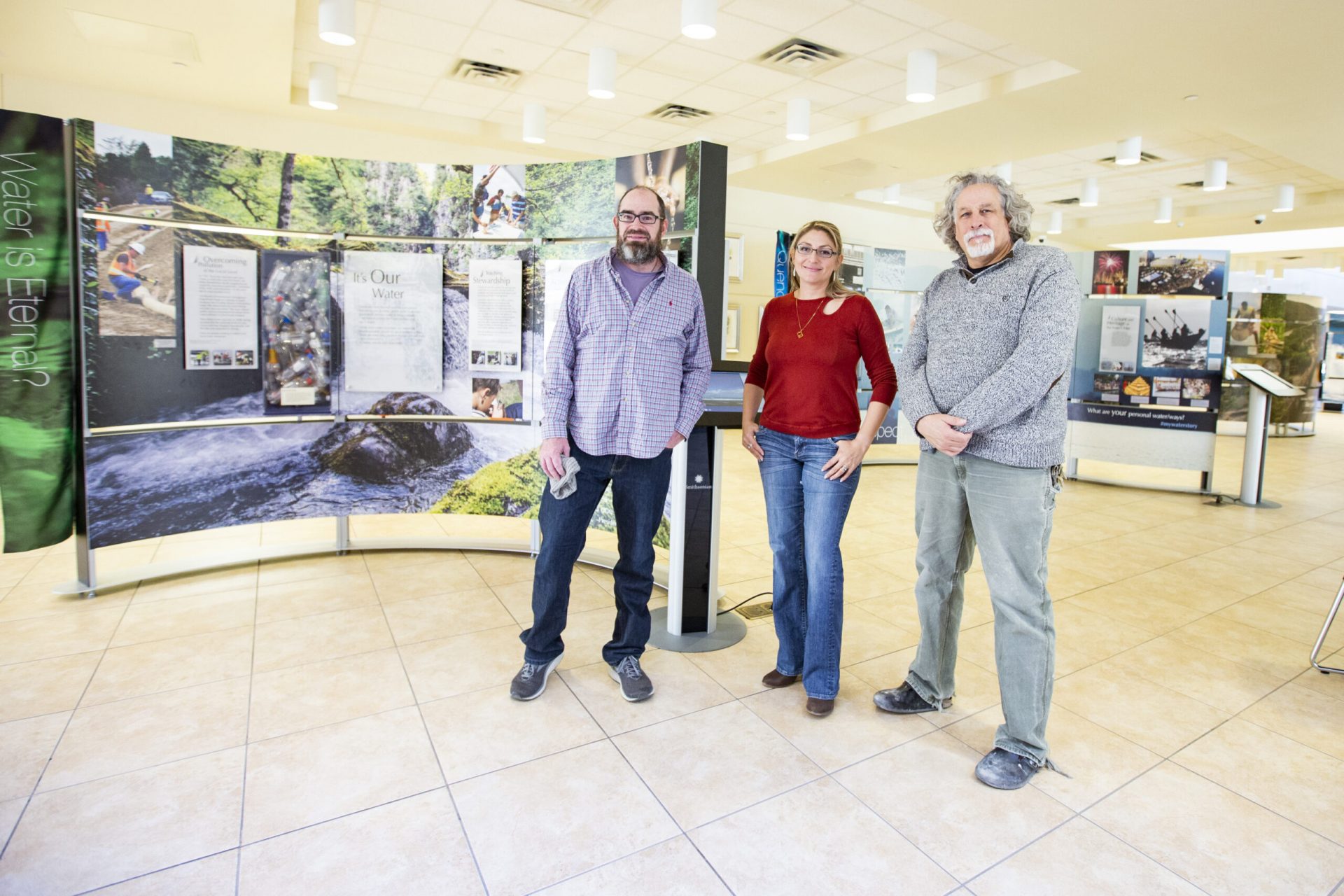Bringing together a variety of departments, the University of Texas Permian Basin has the Water/Ways, an exhibit from the Smithsonian, on display in the Science and Technology Building.
UTPB Associate Professor of Art Chris Stanley, Derek Catsam, Kathlyn Cosper Dunagan, Professor in the Humanities, and Milka Montes, associate professor, Department Chair, chemistry, have been working together on the project, although Catsam said Stanley is the lead.
With all the postponements due to COVID, Stanley said it’s fairly miraculous that the exhibit got to UTPB.
“When those crates arrived it was like, okay, we’re getting back to that sense of normality,” Stanley said.
“Museum on Main Street: Hometown Teams — How Sports Shaped America” also was a Stanley-Catsam project in 2018.
“… I had a vision that Dr. Catsam shared of bringing the quality of the Smithsonian to the Permian Basin,” Stanley said.
This show being about water, they went to their friend and colleague Montes to ask if other parts of the campus community would be interested in a show specifically on water.
“It’s very topical for where we are right now. And we saw our city government kind of deal with water issues throughout the last year and how our community is going to what would you call weather the storm of the cost of getting good water for the residents of the community in the millions and millions of dollars and how tight that got politically in the discussions and so we thought, well, what a perfect show to have,” Stanley said.
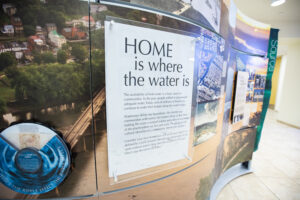
The exhibit is sponsored by Odessa Arts.
Catsam said the water exhibit is truly interdisciplinary.
Hometown Heroes for involved areas such as history, sociology and kinesiology. With water, Catsam said, it can involve many more disciplines.
“… Because every discipline in an academic setting is going to have to deal with water issues in some way or other whether it’s historically; whether it’s archaeologically; whether it’s on the scientific side, and so forth. On the other hand, unless you have a hydrology program, which we don’t, you don’t have any discipline that just says yeah, that’s us. So it requires a lot of collaboration, which I think is the strength of what we can do because all of our constituent parts are so relatively small,” Catsam said.
He added that the College of Engineering has been supportive, as has Michael Zavada, professor and Chair, Department of Geosciences.
About 20 people put the exhibit together.
Stanley said the exhibit hits science, humanities and spirituality.
“It’s a thematic narrative of water and what water means in society using images, using light, but real science, using some hands-on exhibits …,” Catsam said.
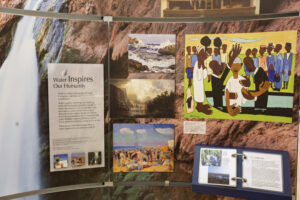
Each panel hits on a theme, but the theme itself is pretty big and covers a lot of directions.
He added that the exhibits themselves flow.
“They’re not straight. They’re on this sort of wave and so what I think it does is it allows us to think in terms of the kind of narrative that water itself creates where it forges a path, but that path can change. If something gets in its way, it is maneuverable and moves around it. Eventually, though, it will impose its will on whatever it is that gets in the way. …,” Catsam said.
He added that the exhibit also brings to mind the hubris that made cities like Phoenix, Dubai, Los Angeles, Odessa and Midland possible.
Stanley said this past summer Catsam had a class where students looked into historical issues with water. At one point, people thought Odessa was going to be an agricultural Garden of Eden with water coming up from windmills.
“In a way, their success was their failure because the more and more people that were putting straws down more and more water coming out in the water table it eventually started to dry out on them,” Stanley said.
Catsam said you could lead his students in a direction and they would take it from there.
“… It’s a testament in some ways to the university. We’re plucky. We have to fight above our weight and I think our students do that as well,” Catsam said.
Montes said the beauty of the display is that anybody can relate to it.
The show is open to the public during the hours of the Science and Technology Building which run from 8 a.m. to 10 p.m.
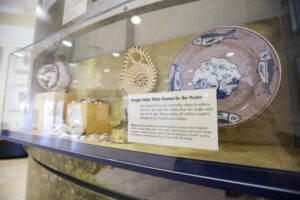
Catsam said the exhibit is self-guided.
“There are these five connected, but not chronologically or in any way structurally enforced things. So you just start at one end and go to the other and there is some interactive stuff …,” he said.
Stanley said the exhibit is wanted in El Paso on March 3.
“… We’ll probably pack it up March 1, and then drive it to El Paso,” Stanley said.
As a side note, he said they will be taking Pots-n-Prints to El Paso in that same time period.
“And so we’re building bridges with other communities because of the show. … One of the interesting things that’s happened since Dr. Catsam and I had done the hometown team show was that we’re still in contact with people who had helped us with that show and they’ve continued hunting and finding images and photographs and things like the original baseball field that was here in Odessa. So in a way we kind of enabled citizen researchers. Our passions, their passions, became a community passion for telling these stories and we’re hoping that the same thing is going to happen with water,” Stanley said.
Scott McKay, Dean of College of Arts and Sciences, said an exhibit like Water/Ways is important for an area like the Permian Basin.
“… Water is probably … one of the most pressing environmental limitations we have in all of West Texas. Without the water, there is no economic development; there is no growth; there’s no quality of life. So with that comes leveraging the water with the natural resources we do have, which happen to be petroleum products. So even more important than a university, science gets involved to help the situations along. So it’s nice that they were able to bring this here. It really fits in well with our mission,” McKay said.

